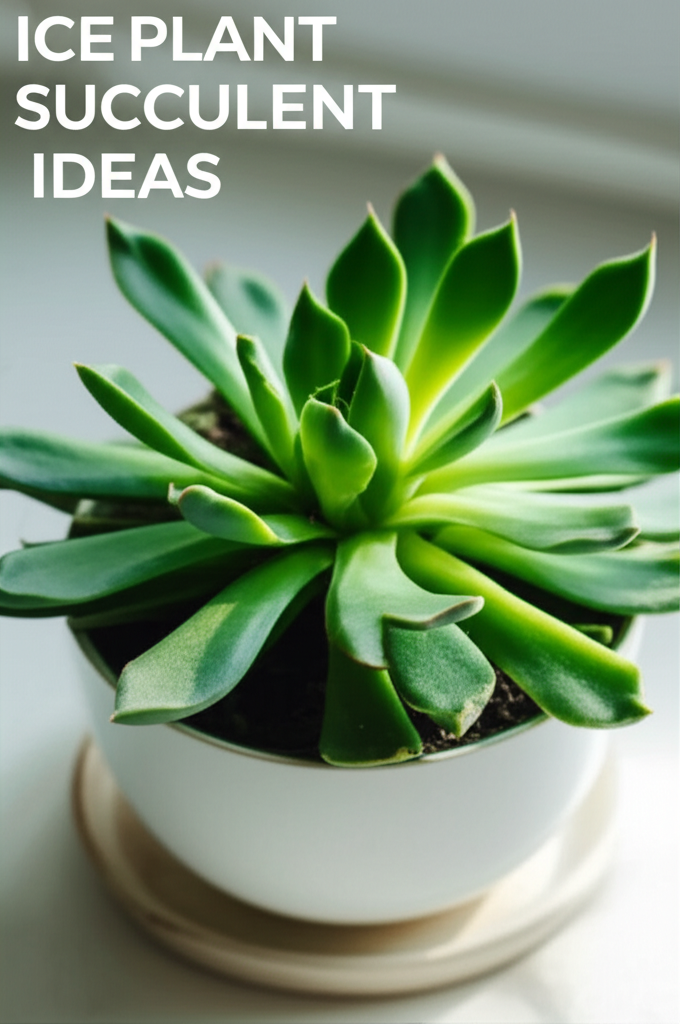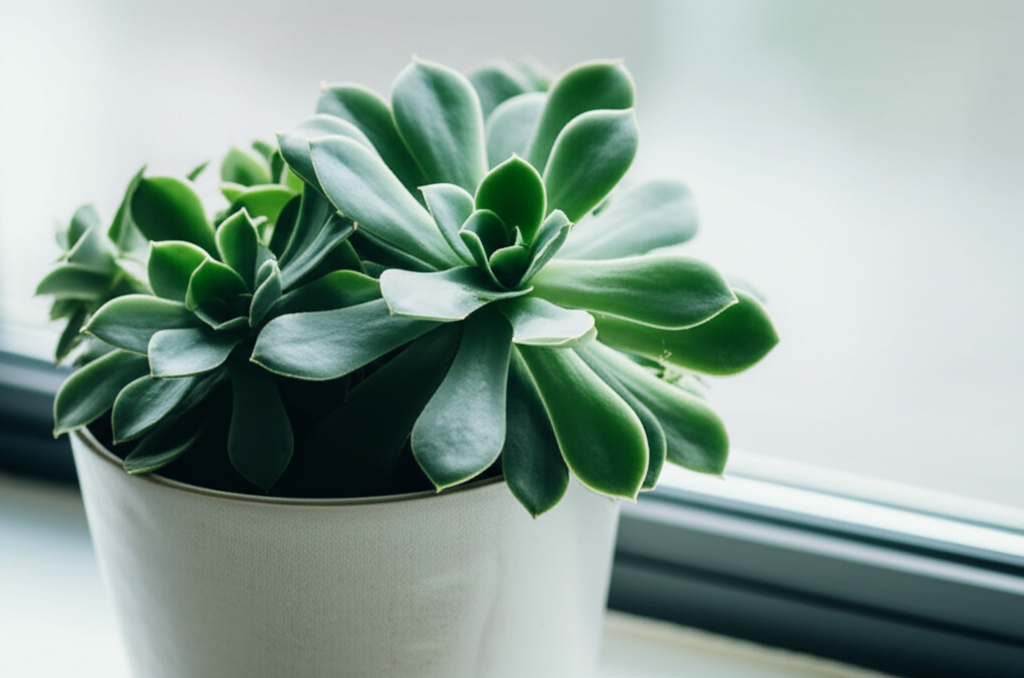Introduction: Bringing the Outdoors In with Ice Plant Succulents
Transforming your living space into a thriving indoor sanctuary is a rewarding endeavor, and few plants offer the unique combination of aesthetic appeal, low-maintenance charm, and potential air-purifying benefits as ice plant succulents. These fascinating succulents, belonging to the Aizoaceae family (often referred to as the “mesembs”), are renowned for their distinctive “ice-like” papillae – specialized epidermal cells that give them a frosted appearance. Beyond their visual intrigue, incorporating a diverse range of indoor plants, including the resilient ice plant, into your home or office can significantly contribute to improved indoor air quality and overall well-being.
This article delves into the captivating world of ice plant succulents, exploring their characteristics, their role in an indoor air quality garden, and practical ideas for integrating them into your home. We will uncover how these hardy plants can be more than just decorative pieces, actively contributing to a healthier and more vibrant living environment.
Understanding Ice Plant Succulents: A Closer Look

Ice plants are a diverse group, with over 2,000 species originating primarily from Southern Africa. Their common name, “ice plant,” stems from the shimmering, translucent cells that cover their leaves and stems. These papillae are not just for show; they serve several crucial functions for the plant in its native arid environments.
The Unique Papillae: More Than Just Decoration
The papillae of ice plants are essentially modified epidermal cells filled with water. In their natural habitat, these cells act as:
- Water Storage: They help the plant retain moisture from dew and infrequent rainfall, crucial for survival in dry climates.
- Light Scattering: The translucent nature of the papillae scatters sunlight, protecting the plant’s sensitive tissues from intense solar radiation and preventing overheating.
- Salt Excretion: Some ice plant species are halophytes, meaning they can tolerate and even thrive in saline soils. Their papillae can accumulate and excrete excess salt, preventing toxicity.
This remarkable adaptation makes ice plant succulents incredibly resilient and well-suited for indoor cultivation, where conditions can sometimes be challenging.
Key Characteristics for Indoor Gardening
When considering ice plant succulents for your indoor garden, understanding their key characteristics is essential:
- Drought Tolerance: Like most succulents, they store water in their leaves and stems, making them highly drought-tolerant. Overwatering is a more common pitfall than underwatering.
- Sunlight Requirements: Most ice plants thrive in bright, indirect sunlight. Direct, harsh sun can scorch their delicate papillae.
- Soil Preferences: They require well-draining soil, mimicking their native sandy or gravelly environments. A cactus or succulent potting mix is ideal.
- Temperature Tolerance: They prefer moderate indoor temperatures, typically between 60-75°F (15-24°C). They can tolerate cooler temperatures but should be protected from frost.
- Growth Habits: Ice plants exhibit a variety of growth habits, from low-growing groundcovers to trailing varieties and more upright forms, offering versatility in design.
Ice Plant Succulents and Indoor Air Quality: The Science Behind the Green
While the direct, quantifiable impact of ice plant succulents on indoor air quality may not be as extensively documented as that of some other popular houseplants (like Snake Plants or Spider Plants), the general principle of the “houseplant effect” applies. Plants, through the process of photosynthesis and other biological mechanisms, can contribute to a healthier indoor environment.
Photosynthesis: A Natural Air Purifier
The fundamental process of photosynthesis is where plants convert carbon dioxide into oxygen. This is a constant, albeit small-scale, air purification process occurring in every living plant.
Transpiration: Humidity and Air Movement
Plants release water vapor into the air through a process called transpiration. This can help to:
- Increase Humidity: In dry indoor environments, especially during winter months, transpiration can help raise humidity levels, which can alleviate dry skin, itchy eyes, and respiratory discomfort.
- Promote Air Circulation: The gentle release of water vapor can create subtle air currents, contributing to a more refreshed atmosphere.
Potential for VOC Absorption
Volatile Organic Compounds (VOCs) are common indoor air pollutants emitted from furniture, cleaning products, paints, and building materials. While research is ongoing and species-specific, some studies suggest that plants, including succulents, can absorb certain VOCs through their leaves and roots. The specialized epidermal cells of ice plants might offer unique pathways for such absorption, though more research is needed to confirm this for specific ice plant species.
The Psychological Benefits: Stress Reduction and Well-being
Beyond the physical aspects of air purification, the presence of plants in our living and working spaces has been scientifically proven to reduce stress, improve mood, and boost productivity. The visual appeal of ice plant succulents, with their unique textures and colors, can contribute to a more calming and aesthetically pleasing environment, indirectly impacting well-being.
Designing Your Ice Plant Air Quality Garden: Creative Ideas
Integrating ice plant succulents into your home as part of an air-quality focused garden is both practical and aesthetically rewarding. Their diverse forms and low-maintenance nature make them ideal for various applications.
Table 1: Key Facts and Comparison of Popular Ice Plant Varieties
To help you choose the best ice plants for your indoor air quality garden, here’s a look at some popular varieties and their characteristics:
| Variety Name | Scientific Name (Commonly Used) | Appearance | Growth Habit | Sunlight Needs | Watering Needs | Ideal for |
|---|---|---|---|---|---|---|
| Living Stones (Lithops) | Lithops spp. | Stone-like appearance, fused leaves. | Clump-forming, low-growing. | Bright, direct sun. | Very infrequent (only when soil is completely dry). | Beginners, arid-themed displays. |
| Dew Plant (Drosera) – Not a true ice plant but often grouped by appearance | Drosera spp. | Carnivorous, sticky tentacles on leaves. | Varies, many are rosettes or creeping. | Bright, indirect to direct sun. | Consistently moist, distilled water. | Unique specimen, pest control. (Note: requires different care than true ice plants). |
| Pink Ice Plant (Kalanchoe spp.) | Kalanchoe tomentosa | Fuzzy, felty leaves with brown tips. | Upright, branching. | Bright, indirect sun. | Infrequent (allow soil to dry out). | Desk plants, shelves. |
| Carpet Ice Plant | Delosperma spp. | Succulent, often trailing or mat-forming leaves. | Groundcover, trailing. | Bright, indirect sun. | Infrequent (allow soil to dry out). | Hanging baskets, cascading displays. |
| “Window Plant” (Fenestraria aurantiaca) | Fenestraria aurantiaca | Finger-like leaves with transparent “windows” at tips. | Clump-forming, low-growing. | Bright, indirect sun. | Infrequent (allow soil to dry out). | Terrariums, small containers. |
Note: While “Dew Plant” is listed for comparison due to a superficial visual similarity for some, it is a carnivorous plant with entirely different care requirements and is not a true ice plant.
Creating Zones for Optimal Growth and Air Quality
Consider different areas of your home and how ice plants can thrive in them:
Living Areas: Bright Windowsills and Shelves
- Place small potted ice plants on windowsills in your living room or bedroom where they can receive ample bright, indirect light.
- Group several small succulents together on a shelf to create a miniature indoor succulent garden. This maximizes their visual impact and potential air-purifying surface area.
- Trailing varieties like carpet ice plants can be placed in hanging baskets near windows, allowing their foliage to cascade down, adding a touch of living decor.
Workspaces: Desk Companions for Focus and Freshness
- A single, compact ice plant can be an excellent desk companion, providing a touch of greenery to boost mood and potentially filter airborne particles.
- Choose varieties like the fuzzy Pink Ice Plant for their tactile appeal and upright growth, taking up minimal desk space.
Kitchens and Bathrooms: Humidity Lovers (with Caution)
While ice plants are drought-tolerant, the increased humidity in kitchens and bathrooms can be beneficial for some succulent varieties, as long as they still receive adequate light and excellent drainage. However, avoid overwatering in these areas, as stagnant moisture can lead to rot.
Combining Ice Plants with Other Air-Purifying Plants
For a comprehensive indoor air quality garden, combine your ice plants with other well-known air-purifying plants. This creates a synergistic effect and a more diverse indoor ecosystem. Consider:
- Snake Plant (Sansevieria trifasciata): Excellent at converting CO2 to oxygen at night and filtering formaldehyde and benzene.
- Spider Plant (Chlorophytum comosum): Known for its ability to remove formaldehyde, xylene, and toluene.
- Peace Lily (Spathiphyllum spp.): Filters ammonia, benzene, formaldehyde, and trichloroethylene.
- ZZ Plant (Zamioculcas zamiifolia): Highly tolerant of low light and good at removing xylene, toluene, and benzene.
Caring for Your Ice Plant Succulent Air Quality Garden
Maintaining a thriving ice plant garden is straightforward, thanks to their inherent resilience. However, understanding their specific needs will ensure their longevity and contribution to your indoor environment.
Watering: The Art of Letting Them Dry Out
The most common mistake with succulents is overwatering. Ice plants prefer their soil to dry out completely between waterings.
- Check the Soil: Insert your finger about an inch into the soil. If it feels dry, it’s time to water.
- Water Thoroughly: When you water, water deeply until water drains from the bottom of the pot.
- Avoid Misting: While the papillae might look like dew, avoid misting the leaves directly, as this can encourage fungal growth.
- Seasonality: Water less frequently in the winter when plant growth naturally slows down.
Light: The Golden Rule of Bright, Indirect Light
As mentioned, most ice plants thrive in bright, indirect sunlight.
- Ideal Placement: East or west-facing windows are often ideal. South-facing windows may require a sheer curtain to diffuse intense afternoon sun.
- Signs of Insufficient Light: Etiolation (stretching and becoming leggy) indicates the plant needs more light.
- Signs of Too Much Light: Scorched or bleached-looking leaves suggest direct sunlight is too harsh.
Soil and Potting: Drainage is Key
A well-draining potting mix is crucial to prevent root rot.
- Succulent/Cactus Mix: Use a commercially available mix or create your own by combining potting soil with perlite or coarse sand.
- Pot Material: Terracotta pots are excellent as they allow for better airflow and soil drying compared to plastic.
- Drainage Holes: Always ensure your pots have drainage holes.
Fertilizing: Less is More
Ice plants are not heavy feeders.
- Frequency: Fertilize sparingly, perhaps once or twice during the growing season (spring/summer) with a diluted succulent fertilizer.
- Avoid Over-Fertilizing: Too much fertilizer can lead to weak, leggy growth.
Table 2: Steps for Propagation, Pros, and Cons of Ice Plant Succulents
Here’s a breakdown of how to propagate your ice plants and the advantages and disadvantages of keeping them indoors:
| Category | Details |
|---|---|
| Propagation Methods |
|
| Pros |
|
| Cons |
|
Conclusion: Cultivating a Healthier, More Beautiful Home with Ice Plants
Incorporating ice plant succulents into your indoor environment offers a delightful blend of unique beauty and subtle contributions to a healthier living space. Their remarkable adaptations for survival in arid climates translate into remarkably easy-care plants for the home. By understanding their specific needs for light, water, and soil, you can cultivate a thriving collection that not only enhances your décor but also participates in the ongoing effort to purify your indoor air.
As you design your indoor air quality garden, remember the synergistic power of diverse plant life. Ice plants, with their captivating textures and resilient nature, are excellent companions to other air-purifying powerhouses. Embrace the simplicity and charm of these frosted wonders, and enjoy the multifaceted benefits they bring to your personal oasis. Your home will not only be visually enriched but will also feel a little fresher, a little calmer, and a lot more alive.


